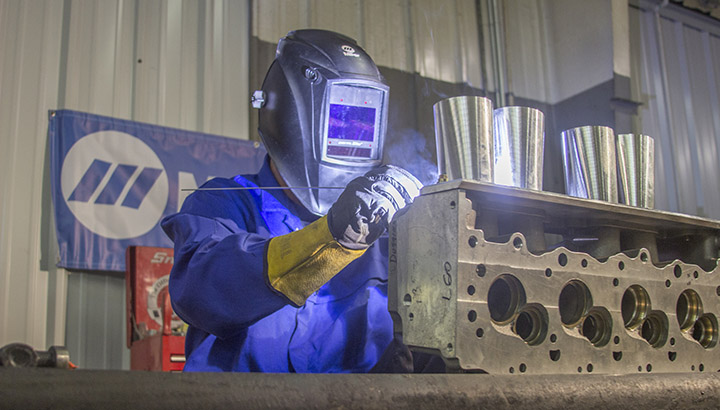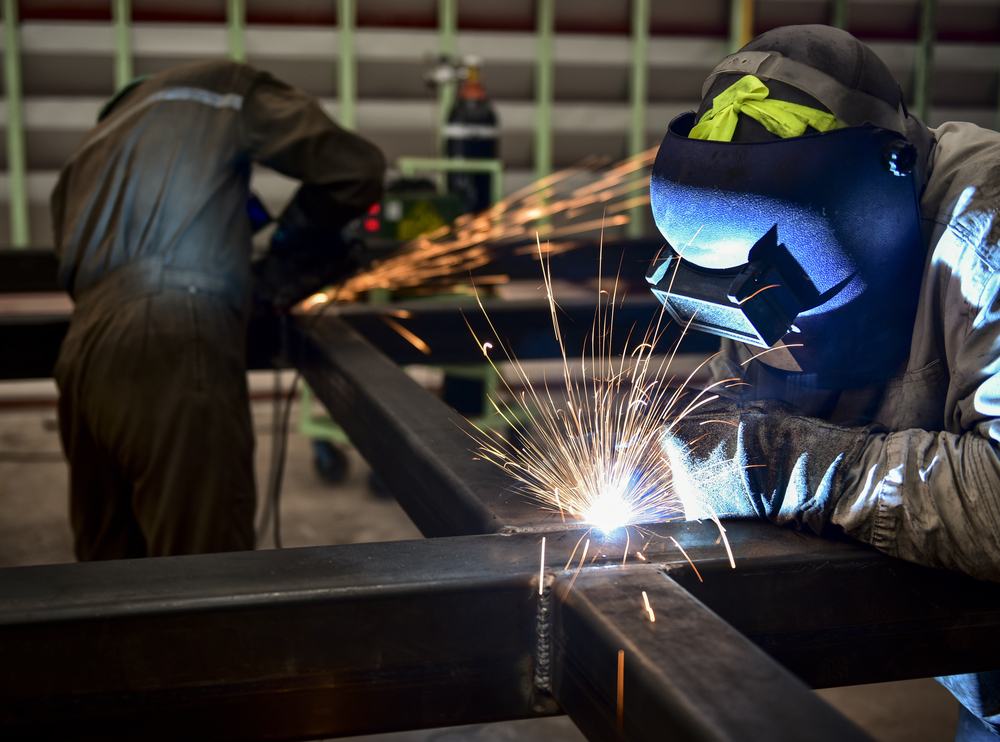Usual Welding Repair Work Issues and Just How to Address Them Effectively
Welding fixings usually come across an array of concerns that can threaten the stability of the final product. Common problems include poor infiltration, porosity, and imbalance, amongst others. Each issue offers unique difficulties that need particular methods for resolution. Understanding these concerns is important for welders aiming to improve their end results and abilities. This conversation will explore these usual welding repair concerns and efficient methods to resolve them.
Inadequate Infiltration
Poor penetration takes place when the weld metal fails to totally fuse with the base material, causing weak joints and possible structural failings. This concern typically comes from insufficient heat input, inaccurate electrode angle, or incorrect welding rate. Welders might encounter inadequate infiltration as a result of a miscalculation of the required parameters for a particular material thickness or kind. Furthermore, contamination on the base material's surface area can impede reliable bonding, aggravating the problem. To resolve inadequate penetration, welders should ensure ideal settings on their tools and maintain a tidy job surface area. Regular inspection of welds is advised to identify any type of deficiencies early, permitting prompt modifications and the avoidance of endangered structural integrity in bonded settings up.
Porosity
Porosity is a common problem in bonded joints that materializes as little gas bubbles entraped within the weld steel. This problem can endanger the integrity of the weld, bring about decreased strength and potential failure under anxiety. Montana Mobile Welding and Repair Belgrade Welding. Porosity generally occurs from contamination, wetness, or incorrect welding methods, which permit gases to escape right into the liquified weld swimming pool. To address porosity, welders should guarantee appropriate surface area prep work, keep a clean functioning environment, and utilize appropriate welding criteria. In addition, choosing the appropriate filler product and securing gas can minimize gas entrapment. Routine assessment and screening of welds can aid identify porosity early, guaranteeing timely corrective actions are taken, therefore protecting the top quality and dependability of the welded structure
Misalignment
Misalignment in welding can develop from different factors, consisting of inappropriate setup and thermal expansion. Understanding the origin is essential for effective resolution. Numerous correction strategies are readily available to straighten parts and assure architectural integrity.
Root causes of Imbalance
Welding imbalance commonly comes from a selection of underlying issues that can endanger architectural honesty. One primary cause is inappropriate fit-up of elements prior to welding, which can bring about spaces and irregular surface areas. Variations in thermal development throughout the welding process can also lead to distortion, especially if the products being signed up with have various coefficients of development. Furthermore, inadequate fixturing and securing may fall short to hold parts securely in position, bring about activity during welding. Poorly maintained tools, consisting of welding equipments and tools, might present variances in the weld grain, further contributing to imbalance. Operator error, stemming from not enough training or experience, can additionally play a substantial role in producing misaligned welds.

Adjustment Strategies Available
Attending to imbalance properly calls for a mix of corrective techniques tailored to the specific issues handy. One typical technique is making use of fixtures or jigs to hold components in the appropriate position during welding, making certain constant positioning. Furthermore, pre-heating the products can help in reducing distortion and boost fit-up. For considerable misalignment, mechanical realignment strategies, such as using hydraulic jacks or clamps, can be employed to remedy the setting before welding. Post-weld warm therapy might also be necessary to ease stress and anxieties triggered by imbalance. Cautious inspection and modification during the configuration stage can avoid imbalance problems from becoming considerable problems, advertising a smoother welding procedure and boosting general structural integrity.
Distortion
Distortion is a typical difficulty in welding that can develop from various aspects, including irregular cooling and heating. Comprehending the root causes of distortion is essential for implementing reliable prevention techniques. Resolving this problem not only boosts structural integrity but also enhances the general top quality of the weld.
Sources of Distortion
When based on the intense heat of welding, products commonly undertake modifications that can lead to distortion. This phenomenon primarily occurs from thermal expansion and tightening throughout the welding procedure. As the weld location warms up, the material expands; upon cooling, it gets, which can develop inner stresses. In enhancement, uneven heating throughout a work surface can worsen these stress and anxieties, leading to warping or flexing. The kind of product also plays a substantial duty; steels with varying thermal conductivity and coefficients of growth may react in different ways, resulting in unpredictable distortions. Bad joint layout and insufficient fixturing can contribute to misalignment during welding, boosting the possibility of distortion. Recognizing these causes is vital for reliable welding repair and prevention methods.
Prevention Techniques
Reliable prevention techniques for distortion throughout welding focus on regulating warmth input and ensuring correct joint style. Keeping a constant warmth input assists to decrease thermal expansion and tightening, which can lead to distortion. Utilizing methods such as pre-heating the work surface can likewise minimize the temperature level gradient, promoting uniform home heating. Additionally, picking suitable joint designs, such as T-joints or lap joints, can enhance security and lower stress concentrations. Implementing appropriate fixturing to secure the work surfaces in location further help in keeping placement during the welding process. Staggered welding sequences can distribute heat a lot more uniformly, stopping local distortion. By applying these approaches, welders can substantially reduce the chance of distortion and improve the total top quality of their welds.
Breaking
Splitting is an usual problem run into in welding repair services, frequently resulting from different aspects such as inappropriate air conditioning prices, material choice, or poor joint prep work. The occurrence of splits can significantly compromise the honesty of the weld, causing possible failures during procedure. To address this issue, welders should first examine the root triggers, making sure that materials work and properly selected for the specific application. In addition, managing the air conditioning price during the welding procedure is important; rapid air conditioning can generate anxiety and result in splitting. Correct joint design and preparation likewise add to minimizing the risk. Executing these approaches can improve weld quality and sturdiness, inevitably decreasing the possibility of cracking in finished weldments.

Incomplete Combination
A substantial problem in welding repairs is insufficient fusion, which takes place when the weld steel does not effectively bond with the base product or gasless mig previous weld passes - Montana Mobile Welding and Repair Belgrade Welding. This defect can lead to weaknesses in the joint, potentially endangering the honesty of the welded structure. Elements adding to insufficient fusion include insufficient warm input, incorrect welding strategy, and contamination of the surface areas being signed up with. To resolve this issue efficiently, welders should ensure proper pre-weld cleansing and surface area preparation, along with change their welding parameters to accomplish sufficient penetration and fusion. Routine inspection during the welding process can likewise aid identify incomplete fusion early, enabling timely corrective procedures to improve the overall high quality of the weld
Overheating
While welding repairs can enhance architectural stability, overheating presents a substantial difficulty that can cause product deterioration. Extreme warmth during welding can change the mechanical buildings of steels, leading to minimized toughness, boosted brittleness, and warping. This phenomenon is particularly find out here critical in high-stress applications where structural dependability is critical. Recognizing overheating can include aesthetic examinations for staining or distortion, in addition to checking temperature during the welding process. To mitigate the threats linked with getting too hot, welders must utilize proper techniques, such as regulating warmth input, readjusting traveling speed, and utilizing appropriate filler materials. In addition, executing pre- and post-weld heat therapies can help restore material properties and improve the general top quality of the repair, guaranteeing lasting efficiency and safety and security.
Regularly Asked Concerns
What Are the Common Indications of a Welding Issue?

Exactly How Can I Check My Welds for Top quality?
To evaluate welds for top quality, one can utilize visual evaluations, ultrasonic screening, and radiographic methods. Each method guarantees architectural integrity, recognizes defects, and verifies adherence to specified requirements, eventually improving the integrity of the welded joints.
What Safety and security Precautions Should I Take While Welding?
When welding, one should focus on safety and security by wearing appropriate personal protective equipment, making sure correct ventilation, securing flammable products away, keeping a clean office, and recognizing surroundings to prevent injuries and crashes.
Can I Repair a Weld Without Redesigning the Entire Joint?
Fixing a weld without redoing the entire joint is possible, depending upon the damage (Montana Mobile Welding and Repair Belgrade Fabrication). Strategies such as grinding, including filler material, or making use of a welding procedure can effectively resolve certain problems while preserving the bordering structure
What Equipment Are Vital for Effective Welding Repairs?
Essential tools for efficient welding fixings consist of a welding equipment, cord brush, grinder, safety gear, clamps, my link and filler materials. Each device plays an important duty in making certain high quality and safety throughout the repair work process. Porosity commonly occurs from contamination, wetness, or incorrect welding techniques, which allow gases to escape right into the liquified weld pool. Improperly conserved equipment, including welding equipments and devices, may present inconsistencies in the weld grain, further adding to misalignment. When subjected to the intense warm of welding, materials frequently undertake changes that can lead to distortion. Cracking is an usual concern encountered in welding repairs, typically resulting from numerous elements such as inappropriate air conditioning rates, product option, or insufficient joint prep work. A significant concern in welding repair services is incomplete fusion, which happens when the weld steel does not appropriately bond with the base material or previous weld passes.